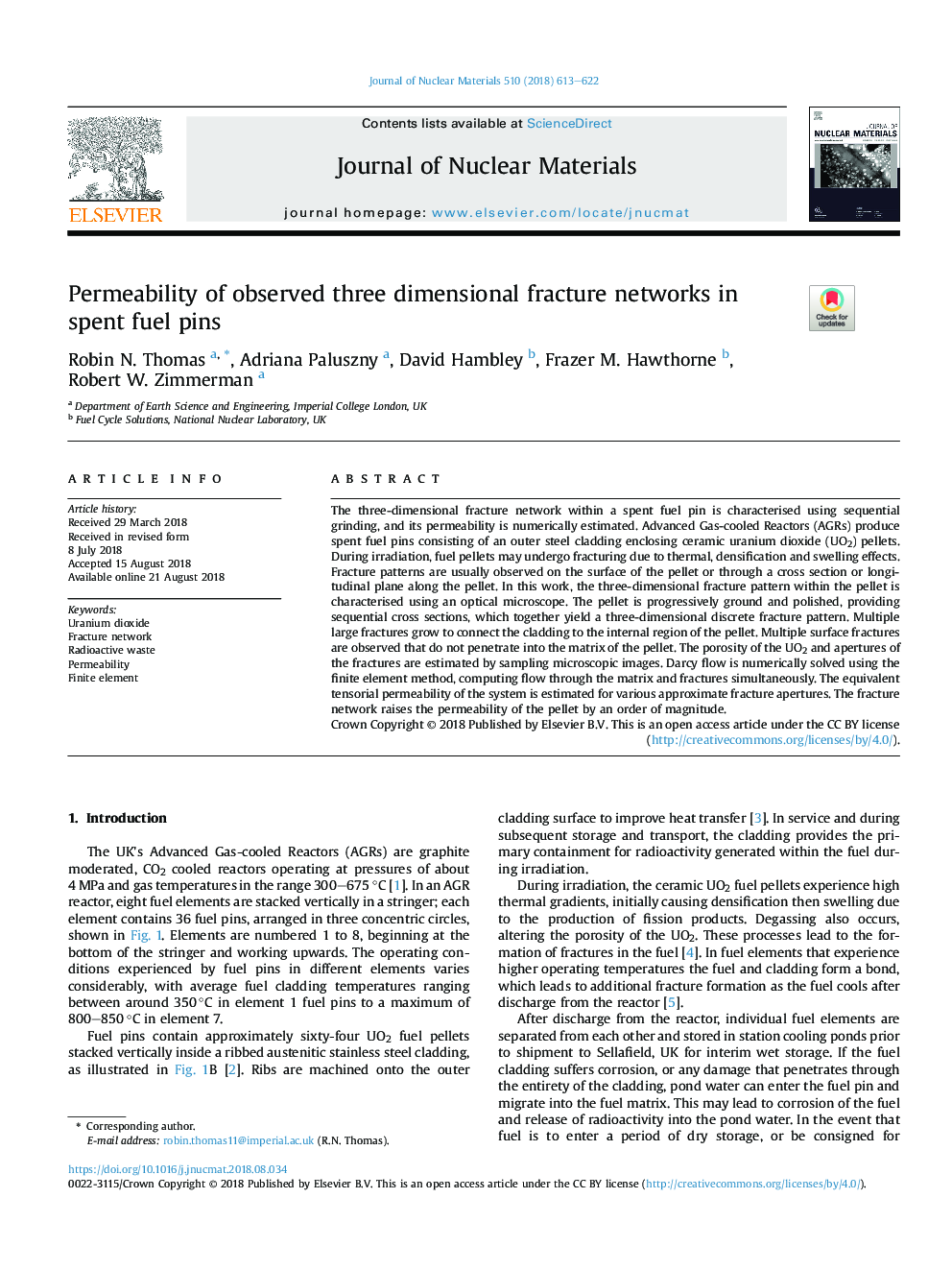| Article ID | Journal | Published Year | Pages | File Type |
|---|---|---|---|---|
| 11006988 | Journal of Nuclear Materials | 2018 | 10 Pages |
Abstract
The three-dimensional fracture network within a spent fuel pin is characterised using sequential grinding, and its permeability is numerically estimated. Advanced Gas-cooled Reactors (AGRs) produce spent fuel pins consisting of an outer steel cladding enclosing ceramic uranium dioxide (UO2) pellets. During irradiation, fuel pellets may undergo fracturing due to thermal, densification and swelling effects. Fracture patterns are usually observed on the surface of the pellet or through a cross section or longitudinal plane along the pellet. In this work, the three-dimensional fracture pattern within the pellet is characterised using an optical microscope. The pellet is progressively ground and polished, providing sequential cross sections, which together yield a three-dimensional discrete fracture pattern. Multiple large fractures grow to connect the cladding to the internal region of the pellet. Multiple surface fractures are observed that do not penetrate into the matrix of the pellet. The porosity of the UO2 and apertures of the fractures are estimated by sampling microscopic images. Darcy flow is numerically solved using the finite element method, computing flow through the matrix and fractures simultaneously. The equivalent tensorial permeability of the system is estimated for various approximate fracture apertures. The fracture network raises the permeability of the pellet by an order of magnitude.
Related Topics
Physical Sciences and Engineering
Energy
Nuclear Energy and Engineering
Authors
Robin N. Thomas, Adriana Paluszny, David Hambley, Frazer M. Hawthorne, Robert W. Zimmerman,
